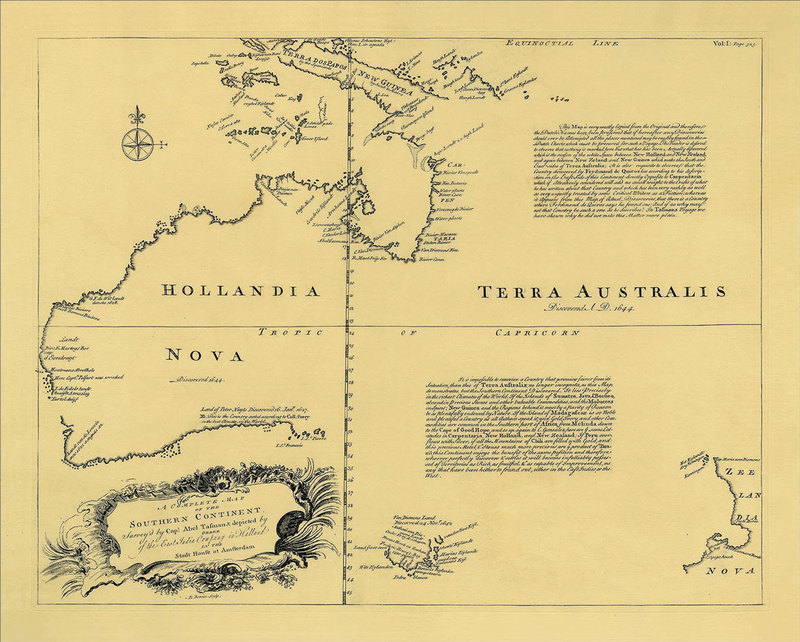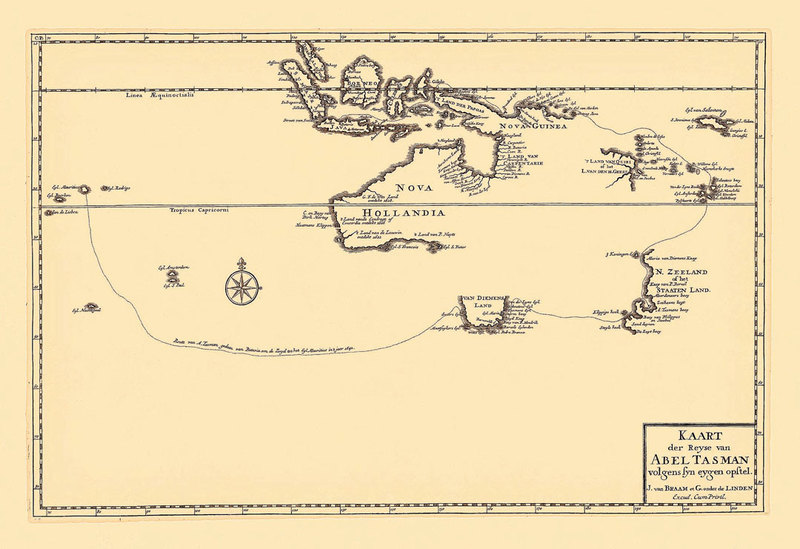
Collection: Indies Gallery Kemang. Image Courtesy of Sake Santema
Despite being inhabited for up to 60,000 years, the continent of Australia was, for much of history, isolated from the rest of the world.
There is some evidence that fishermen and traders from Indonesia, India and China may have visited northern Australia for thousands of years, but Aboriginal Australians and their land were unknown to the western world until the Age of Discovery (15th to 17th centuries) brought Europeans into contact with them.
Hypothesised by Greek philosophers for over 2,000 years, early European cartographers and voyagers continued to presume a mysterious landmass in the South known as, Terra Australis Incognita — translated to ‘Unknown Southern Land’. Many maps featured various estimates on the shape and size of this continent.

Collection: Indies Gallery Kemang
As exploration filled in the blank regions of the world map, the myth of Terra Australis persisted. However, it was not until 1606 that Europeans would sight and land on modern-day Australia.
Despite this initial contact and later voyages by Abel Tasman and other 17th century navigators, there was fierce debate over whether or not this new land, contemporaneously known as New Holland, was the enigmatic Terra Australis. Maps of Australia continued to refer to the continent as ‘New Holland’ until 1824.

“It is impossible to conceive a country that promises fairer from its situation, than this of Terra Australia; no longer incognita, as this map demonstrates…”
Collection: Indies Gallery Kemang
By the late 18th century, Captain Cook had put an end to the ambiguity of a Terra Australis by circumnavigating New Zealand and charting the east coast of Australia. Cook’s voyages revealed them to be independent landmasses, unconnected to the vast southern continent, Terra Australis.
Nevertheless, debate on the name of the new continent persisted. Matthew Flinders, the first to circumnavigate the island continent, was a major figure responsible for using and popularising the name ‘Australia’ from 1804. The British colonial government finally decided in 1817 the continent would, henceforth, be known as Australia.
This article is written by Indies Gallery
Indies Gallery has a fascinating collection of original antique maps, old prints, colonial photographs and historic books, some over 500 years old. Their gallery in Kemang, Jakarta, is a must-visit for those interested in the history of Indonesia.
Indies Gallery
Jalan Kemang Raya 8B
T: +62 813 1900 4269
IG: @antiquemapsindonesia
FB: @antiquemapsindonesia
www.AntiqueMapsIndonesia.com






